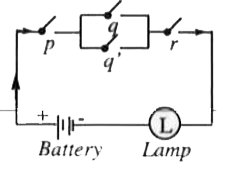How does water flow through a sponge?
Step-by-Step Solution:
1. Structure of the Sponge: The sponge's body is composed of a jelly-like substance called mesohyl, which contains collagen and a dense network of fibers. This structure provides support and shape to the sponge.
Hint: Remember that mesohyl is crucial for the sponge's structure and is primarily made of collagen.
2. Absence of Organ Systems: Sponges do not have a nervous system, digestive system, or circulatory system. Instead, they rely on a constant flow of water through their bodies to obtain nutrients and oxygen and to remove waste products.
Hint: Focus on the fact that sponges have a unique way of living without complex organ systems.
3. Water Entry through Ostia: Water enters the sponge through tiny pores called ostia, located in their outer walls. These pores allow water to flow into the sponge's body.
Hint: Ostia are the entry points for water; think of them as tiny mouths.
4. Feeding Mechanism: As water flows through the sponge, specialized cells filter out food particles from the water. These cells are responsible for capturing nutrients as water passes through.
Hint: The filtering process is essential for the sponge's nutrition.
5. Water Flow Direction: The water flow through the sponge is unidirectional, meaning it moves in one direction. This flow is facilitated by the beating of flagella, which are hair-like structures lining the surface of the sponge's internal chambers.
Hint: The direction of water flow is important; it helps in understanding how sponges maintain their feeding and waste removal processes.
6. Exiting through Osculum: Finally, the water exits the sponge through a larger opening called the osculum, which is often referred to as the "little mouth." This is where the filtered water leaves the sponge after passing through its body.
Hint: The osculum is the exit point for water; it plays a crucial role in the sponge's water flow system.
Summary: Water enters the sponge through ostia, is filtered by specialized cells, flows in one direction due to flagella, and exits through the osculum.
---
Similar Questions
Knowledge Check
Water flows from the
Amore positive osmotic potential to the more negative water potentialBhigher water potential to the lower water potentialCmore positive water potential to the more negative water potentialDall of the aboveBlood flows through sinuses in
Apulmonary circulationBsystemic circulationCopen circulatory systemDclosed circulatory system
During osmosis, flow of water through a semipermeable membrane is:
View SolutionThe water flowing through the same tube having two different cross section areas has different flow rates .
View SolutionA tank with a small orifice contains oil on top of water. It is immersed in a large tank of the same oil. Water flows through the hole. Assuming the level of oil outside the tank above orifice does not change.
a. What is the velocity of this flow initially?
b. When the flow stops, what would be the position of the oil-water interface in the tank?
c. Determine the time at which the flow stops. Density,of oil 800kg/m3.

View Solution16cm3 of water flows per second through a capillary tube of radius a cm and of length l cm when connected to a pressure head of h cm of water if a tube of the same length and radius a/2 cm is connected to the same pressure head the quantity of water flowing through the tube per second will be-
View SolutionWater falls from a tap with A0=4m2, A=1m2 and h=2 m, then velocity v is

View SolutionCan Bernoulli's equation be used to describe the flow of water through a rapid in a river? Explain.
View Solution

